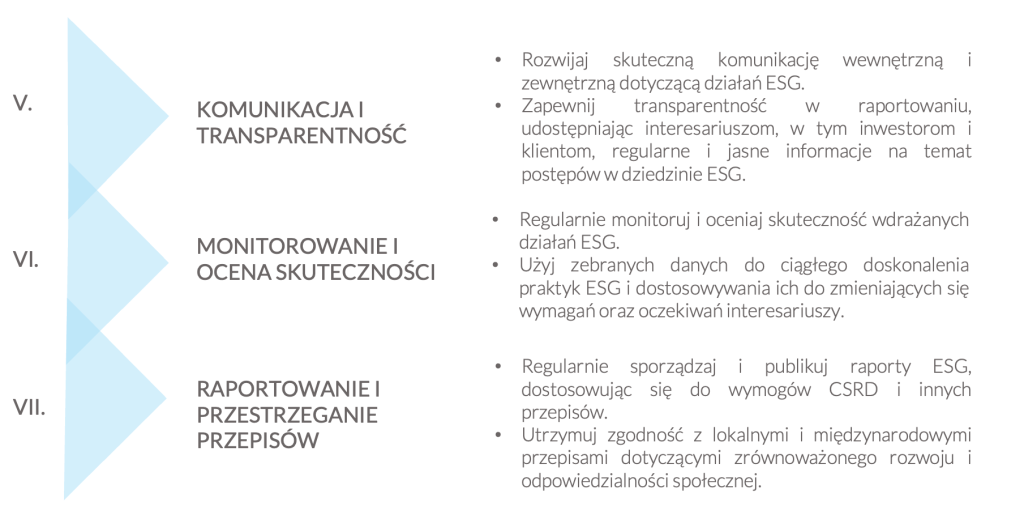
Scenario Analysis in the Context of ESG
October 18, 2023
ESG for Small and Medium-sized Enterprises: How to Get Started?
January 3, 2024Basic information needed to prepare for the first ESG (CSRD and ESG are extensive topics that require thorough analysis and understanding. But what is important to know in a nutshell? Below, we present a brief outline of the most important steps that will help your company prepare for the first implementation of these significant practices.
Let’s start by reminding ourselves of the schedule that lies ahead for European companies in the context of upcoming changes in ESG reporting. These are important dates that will change the way companies communicate their sustainable development activities.
 Which companies are required to prepare and publish non-financial reports?
Which companies are required to prepare and publish non-financial reports?
The year 2025 will mark a turning point for large enterprises in Europe in terms of sustainable development reporting. Until now, only large publicly traded companies employing more than 500 employees had to disclose ESG information.
Starting from 01.01.2025, large enterprises that exceed two out of the following three criteria will also be subject to these requirements.:
- an average annual level of employment of 250 or more employees,
- a balance sheet total of more than 20 million euros,
- or an annual turnover exceeding 40 million euros.
Harmonogram raportowania ESG
 What is CSRD and ESG Reporting and why are they important for your company?
What is CSRD and ESG Reporting and why are they important for your company?
CSRD (Corporate Sustainability Reporting Directive) is an EU directive aimed at increasing transparency in companies’ sustainable development activities. Meanwhile, ESG reporting is a tool for analyzing sustainable management and publishing non-financial aspects of a company’s activities. The goal of ESG reporting is to showcase company actions and increase transparency for investors and stakeholders, potentially improving company outcomes through measurable ESG criteria. Both CSRD and ESG play different but complementary roles in a company’s business strategy, with CSRD focusing on establishing reporting standards and ESG concentrating on the practical aspect of presenting company activities in environmental, social, and governance contexts.
 How to implement CSRD and ESG in your company?
How to implement CSRD and ESG in your company?
Implementing the CSRD directive and ESG reporting practices in a company requires an integrated and strategic approach
Point 1. and 2. Understanding CSRD and ESG requirements, and engagement of management and employees are key for the initial stages of implementation.
Points 5, 6 and 7: Communication and transparency, monitoring and evaluating effectiveness, and reporting and compliance ensure ongoing conformity and improvement of sustainable practices






